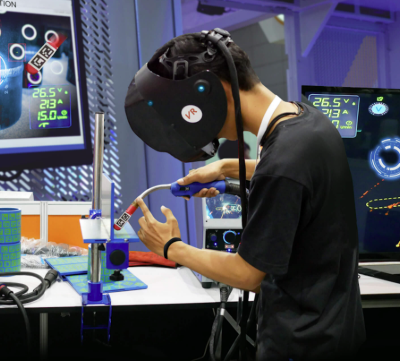Virtual reality (VR) is redefining how students engage with educational content by creating immersive environments that support experiential learning. Rather than just reading or watching, learners can interact with concepts in lifelike simulations—deepening understanding and retention.
What Is Experiential Learning?
Experiential learning involves learning through experience, reflection, and active participation. It emphasizes hands-on activities and real-world applications, making it ideal for building problem-solving, critical thinking, and collaboration skills.
How VR Enhances Experiential Learning:
- Immersive Simulations
VR allows learners to step inside simulations of historical events, scientific processes, or geographic landscapes. For example, students can explore ancient civilizations or examine the human heart in 3D. - Safe Practice Environments
Virtual labs, operating rooms, or emergency response scenarios provide students with risk-free environments to apply skills and make decisions. - Global Accessibility
With VR headsets, learners from anywhere in the world can access field trips, training modules, or workshops that might otherwise be out of reach. - Increased Engagement and Motivation
The novelty and interactivity of VR often lead to higher engagement levels, especially among students who struggle with traditional learning methods. - Support for Different Learning Styles
VR offers visual, auditory, and kinesthetic learners a dynamic space to absorb information in the way that suits them best.
Popular VR Tools in Education:
- Google Expeditions – Offers virtual field trips and lesson-based journeys across science, history, and geography.
- Labster – Provides virtual science labs for biology, chemistry, and physics courses.
- zSpace – Combines VR and AR with interactive lessons for STEM subjects.
- ClassVR – Delivers curriculum-aligned VR experiences for K–12 classrooms.
Considerations for Implementation:
- Cost and Accessibility: VR equipment can be expensive, though options like smartphone-based headsets are lowering the barrier.
- Teacher Training: Educators need support to integrate VR into their lesson plans effectively.
- Screen Time and Health: Sessions should be timed to prevent fatigue and ensure safety.
Conclusion
Virtual reality is a powerful tool for making experiential learning more vivid, accessible, and impactful. As schools embrace immersive technology, students gain the opportunity to engage with content in ways that are both educational and memorable. With thoughtful integration, VR can transform the classroom into a space of discovery, creativity, and real-world exploration.













